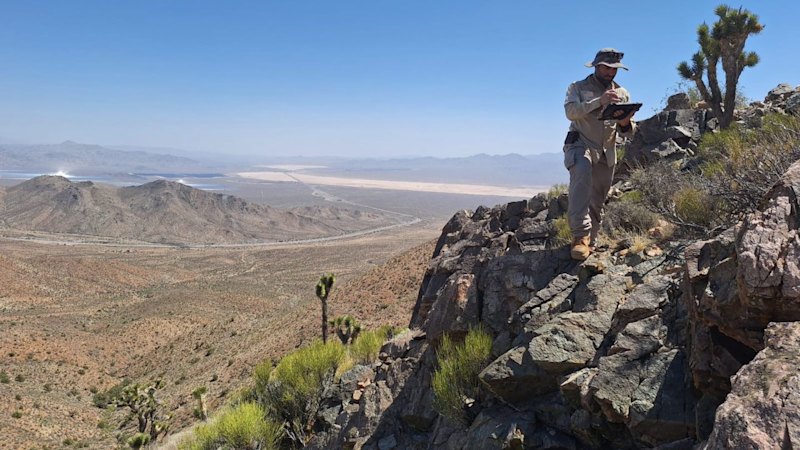
Locksley Resources has initiated its drilling campaign in the Mojave Desert, marking a significant milestone for the company and the United States’ critical minerals agenda. The company confirmed that drilling has commenced at its Mojave project in California, which is rich in rare earth elements and antimony. Positioned adjacent to MP Materials’ Mountain Pass mine, Locksley’s venture could play a crucial role in enhancing the domestic supply chain for these essential minerals.
The drilling program targets two key systems: one focused on rare earths and the other on antimony. The first phase aims to explore the El Campo prospect, which spans an 860-metre strike, while subsequent drilling will investigate the historic Desert antimony mine. Early sample grades have shown promising results, with antimony levels reaching as high as 46 percent and total rare earth oxides (TREO) hitting 12.1 percent. This dual approach positions Locksley to capitalize on the growing demand for rare earths and antimony in various industrial applications.
Strategic Importance of the Mojave Project
The Mojave project is situated in a region recognized by the U.S. government for its potential to support a sovereign supply chain for critical minerals. Both rare earths and antimony are deemed essential for national defense and industrial use, yet currently, there is no domestic production of these metals within the United States. Locksley’s 20-square-kilometre land package holds significant promise, especially given its proximity to the Mountain Pass mine, the only active rare earths producer in the country.
The company’s efforts are backed by substantial funding, including a recent placement that raised $1.47 million from institutional investors. This financial support ensures that the drilling campaign is fully funded and operational, with all necessary approvals already in hand. According to Locksley, the strategic placement of its El Campo prospect could enhance its visibility in Washington, D.C., as the U.S. seeks to reduce dependency on foreign sources for critical minerals.
The Desert antimony mine, which has a history of high-grade production, has also yielded extraordinary samples during preliminary assessments. Historic records indicate silver grades as high as 1,022 grams per tonne alongside significant antimony concentrations. Although this site was last mined nearly a century ago, modern drilling techniques have yet to be applied, creating a unique opportunity for Locksley to explore its potential thoroughly.
Engagement with U.S. Government and Future Prospects
Locksley’s commitment to supporting U.S. supply chains has led to the appointment of Viriathus Capital, a strategic advisor tasked with strengthening the company’s engagement with federal stakeholders. This partnership aims to enhance awareness and facilitate connections with key government entities, including the Department of Defense and the Department of Energy. Viriathus Capital will also assist in pursuing potential collaborations related to research and development, further embedding Locksley within the evolving landscape of U.S. critical minerals.
The strategic timing of this drilling initiative coincides with recent policy developments, including an executive order signed by U.S. President Donald Trump to expedite permitting for critical minerals. The Department of Energy’s Critical Materials Institute has also launched new collaborations aimed at advancing technologies related to rare earths and antimony. Locksley is actively pursuing these opportunities and exploring innovative processing partnerships that align with environmental and governance standards.
As the company prepares for its drilling activities, it is poised to play a pivotal role in America’s mining revival. Should initial drilling yield high-grade results, Locksley could emerge as a leader in the domestic supply of critical minerals, marking a significant step towards securing a robust and independent supply chain. This campaign not only represents a local opportunity but also contributes to the broader goal of re-establishing America’s position in the global minerals market.






